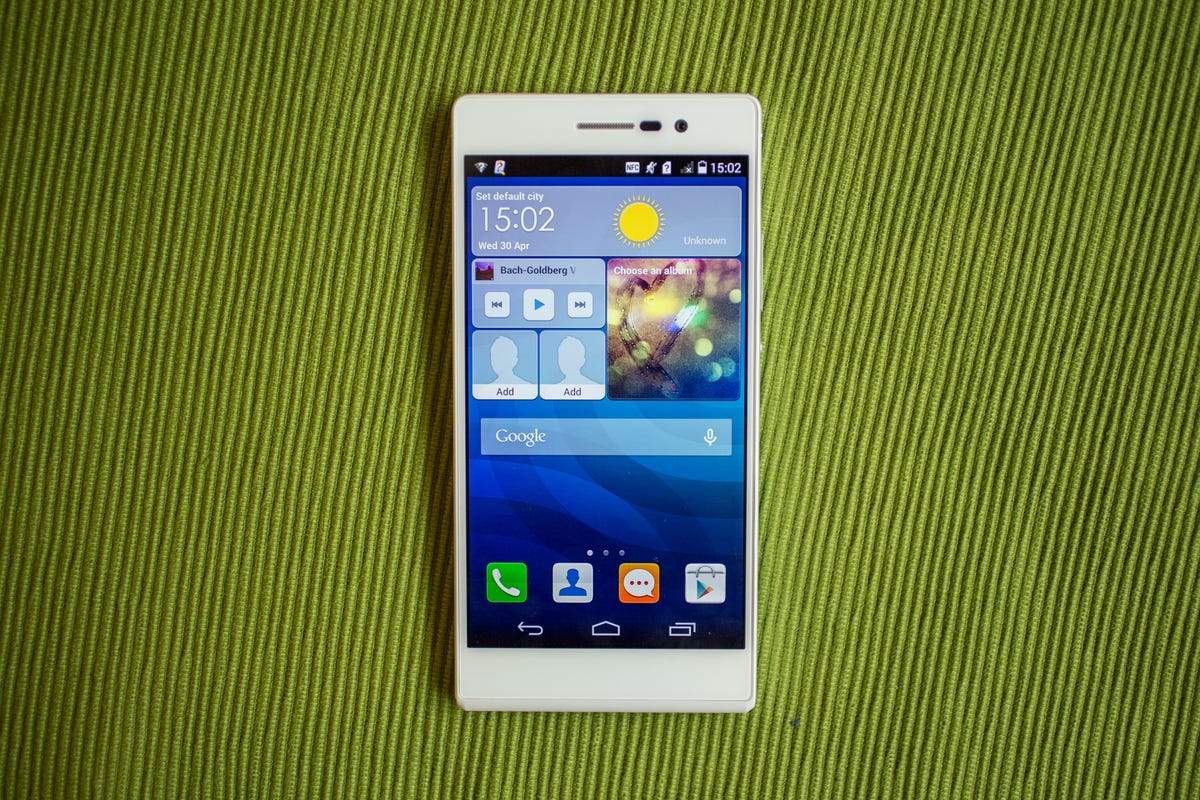
Huawei has a new flagship phone to brag about. The Ascend P7 has a 5-inch, Full HD display, a quad-core processor and a whopping 8-megapixel front-facing camera.
It's due to go on sale in Europe and Asia in June, although Huawei hasn't confirmed a price or whether it will go on sale in the US or Australia.
Instead of the metal back of its predecessor, the rear of the Ascend P7 is made from toughened third-generation Gorilla Glass.
It's slightly thicker than its predecessor the P6, but at 6.5mm it's still incredibly narrow.
Its 5-inch display is larger than the 4.7 inches of the Ascend P6. Its narrow bezel means the body of the phone hasn't had to stretch out too much.
It's available in black as well. I'm not sure which I prefer.
Both black and white models have a slight dotted pattern beneath the glass, which I think looks quite attractive.
Gorilla Glass 3 is apparently great at repelling scratches -- we'll see how it fares against keys, coins and the other detritus in my pockets in the full review.
That's an 8-megapixel camera on the front. Want your selfies to look ultra-crisp? This could be the phone for you.
The power button is a little metal dot set into the metal surround. It felt like you could easily find it in your pocket.
There's a microSD card slot tucked into the edge, allowing you to expand the 16GB of built-in storage.
Huawei has moved the headphone jack from the ridiculous spot on the side of the phone to the top.
Although a sizeable 5 inches, it's not uncomfortable to hold in one hand.
Huawei has slapped on its Emotion UI over the top of Android. I'm not a huge fan -- there's no app tray, meaning all your icons and widgets are scattered among the numerous home screens, which can quickly become cluttered.
It does have the latest Android 4.4 KitKat software on board, however.
It operates much like regular Android at its heart though, so existing 'Droiders won't find it too difficult to get to grips with.
Emotion UI does allow for customisation using a variety of themes that change everything from the colour schemes to the app icons.
There's also a simplified home screen mode, which will come in handy for anyone terrified of jumping into the regular interface.
There's a 13-megapixel camera on the back, with an LED flash beneath it.
The camera comes with the usual scene modes and image effects, as well as a feature that pairs an image with 10 seconds of audio -- a feature lifted directly from Samsung's recent Galaxy range.

